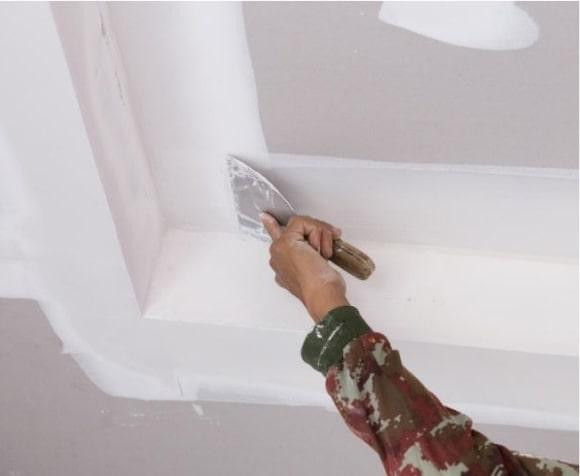Plastering, often overlooked in the broader spectrum of construction and home improvement, is an age-old craft that plays a crucial role in enhancing the aesthetics and durability of structures. Plasterers, the skilled artisans behind this trade, transform walls and ceilings into works of art through their mastery of the craft. In this exploration of the art of plastering, we delve into the intricacies of the craftsmanship, the techniques involved, and the importance of these skilled professionals in creating beautiful and enduring spaces.
The Foundations of Plastering
At its core, plastering is the application of a mixture, typically consisting of gypsum, lime, or cement, along with sand and water, to walls and ceilings. This process dates back centuries, with evidence of plasterwork found in ancient civilizations such as Rome and Egypt. The longevity of plastering as a construction technique underscores its timeless appeal and effectiveness.
The Skilled Hands of Plasterers
Plasterers, often described as craftsmen or artisans, are individuals who have honed their skills through training and experience. Their work involves much more than a simple application of plaster; it requires a deep understanding of materials, surfaces, and the nuances of creating a seamless, smooth finish. A skilled plasterer possesses an artist's eye for detail and an engineer's understanding of structural elements.
The Craftsmanship in Detail
-
Surface Preparation: The journey of a plasterer begins with the preparation of the surface. This involves cleaning and priming the walls or ceilings to ensure a proper bond between the substrate and the plaster. Any imperfections, such as cracks or holes, must be addressed meticulously to achieve a flawless finish.
-
Mixing the Plaster: Plastering is as much about the mixture as it is about application. Plasterers carefully mix the plaster to achieve the desired consistency, ensuring that it adheres effectively to the chosen surface. The proportions of the mixture are critical, and experienced plasterers can adjust them based on factors such as humidity and temperature.
-
Application Techniques: The actual application of plaster is where the craftsmanship shines. Plasterers utilize various techniques, such as the float and set method or the traditional three-coat process, depending on the project requirements. The aim is not just to cover the surface but to create a smooth, even, and aesthetically pleasing finish.
-
Texture and Design: For those seeking more than a plain finish, plasterers showcase their artistic abilities by incorporating textures and designs. Whether it's the timeless swirls of Venetian plaster or intricate patterns, skilled plasterers can transform a blank canvas into a visual masterpiece. This step often requires a keen understanding of symmetry, balance, and color.
-
Drying and Finishing: Patience is a virtue in plastering. The drying process is crucial for the plaster to set and harden. During this time, plasterers may perform additional touches to refine the finish. This could involve light sanding, polishing, or adding a protective sealant for long-lasting durability.
Importance of Craftsmanship
The craftsmanship of plasterers goes beyond the superficial aesthetics. Skilled plastering is essential for several reasons:
-
Structural Integrity: Properly applied plaster enhances the structural integrity of walls and ceilings. It acts as a protective layer, preventing moisture infiltration and reinforcing the stability of the underlying surfaces.
-
Aesthetic Appeal: The smooth and visually appealing finish achieved by skilled plasterers adds a touch of sophistication to any space. Whether it's a classic plaster crown molding or a contemporary textured wall, the craftsmanship elevates the overall aesthetics of a room.
-
Longevity and Durability: A well-executed plastering job stands the test of time. The durability of plaster ensures that it can withstand daily wear and tear, providing a long-lasting solution for both residential and commercial spaces.
-
Customization and Personalization: Craftsmanship in plastering allows for customization. Plasterers can tailor finishes to meet the unique preferences and styles of homeowners, ensuring that each project is a reflection of individual taste.
Challenges Faced by Plasterers
While the art of plastering is a revered craft, it comes with its set of challenges:
-
Precision in Mixing: Achieving the right consistency in the plaster mixture requires precision. Factors like weather conditions and the specific properties of materials can influence the outcome.
-
Surface Imperfections: Dealing with uneven or damaged surfaces demands a high level of skill. Plasterers must address these imperfections to ensure a flawless finish.
-
Time-Consuming Process: Plastering is not a quick fix. The drying and finishing stages require time and patience, making it a process that cannot be rushed.
-
Adaptability to Design Trends: Staying abreast of evolving design trends and incorporating them into traditional plastering techniques is a challenge. Plasterers need to balance timeless craftsmanship with contemporary aesthetics.
Summary
In the grand tapestry of construction and design, plasterers are the unsung heroes, weaving beauty and durability into the very fabric of our living spaces. The art of plastering, with its rich history and evolving techniques, continues to captivate those who appreciate the blend of form and function. From the meticulous surface preparation to the final strokes that create intricate designs, plasterers exemplify the true essence of craftsmanship.
As we marvel at the beautifully plastered walls and ceilings around us, it's essential to recognize the skill and dedication of the plasterers who transform mere surfaces into works of art. Their hands, guided by experience and an innate understanding of their craft, leave an indelible mark on the spaces we inhabit, turning ordinary structures into extraordinary expressions of human creativity and skill.
Contact us,
Name: ABC Painters
Address: 23 Blueridge Close, Sunnyvale, Auckland 0612, New Zealand
Phone: +64 21 628 824

